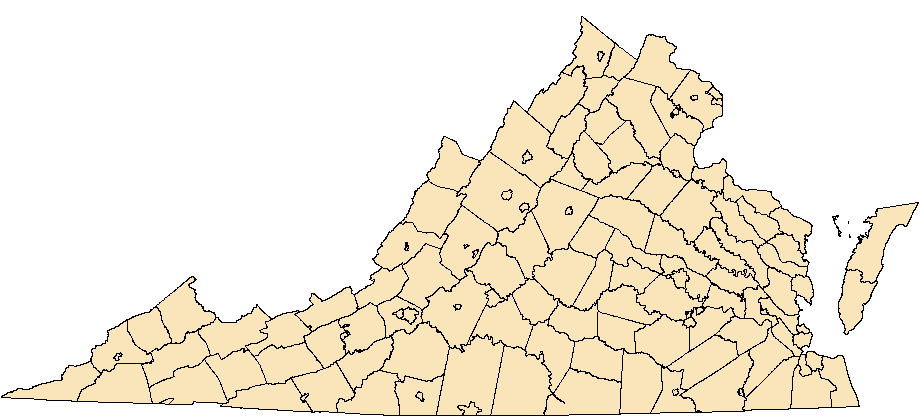Gomphus apomyius Donnelly, 1966
Banner Clubtail
NatureServe Global Rank: G3G4
Virginia State Rank: SH
VA DGIF Tier: IV
Federal Legal Status: None
Virginia Legal Status: None
Description: The Banner Clubtail is a very small yellow and black species with a prominent widening of the abdominal tip (club). There are small yellow triangles on top of most abdominal segments except for the last few which are black with yellow lateral markings. The face is unmarked. Male upper terminal appendages are widely split. Its size range is 35-37 mm (1.4 - 1.5 inches).
Similar species: Many clubtails are very similar and need to be examined in hand and identified using a combination of characters. The Banner Clubtail is in a group of closely related small species with prominent clubs including the Spine-crowned (G. abbreviatus), Mustached (G. adelphus), Piedmont (G. parvidens), and Green-faced (G. viridifrons) Clubtails. The abdominal club of the Banner Clubtail is the widest of its small close relatives like the Piedmont (G. parvidens) and Green-faced Clubtails (G. viridifrons). The brown strip on the side of the thorax is also the widest of its close relatives. See discussions and illustrations in Paulson (2011).
North American Range: The Banner Clubtail lives throughout the southeastern United States, from extreme south-central Virginia south to central Georgia and west to Alabama. Isolated populations are found in the pine barrens of New Jersey and in east Texas. The single Virginia record is from Brunswick County. Dedicated field work may discover more populations of this species in Virginia.
VA Observations by Locality: Brunswick


Flight season and broods: The lone Virginia record is 7 May, but the flight season across its greater range is from late March to late May (LeGrand, 2011).
Aquatic Habitat: The Banner Clubtail's preferred habitat is clean, slow-flowing sandy rivers. It is a Piedmont and Coastal Plain species, not expected in the mountainous western region of the state.
Behavior and Ecology: The Banner Clubtail perches on streamside vegetation. Active in early morning and again late in the day.
Population trend and potential threats: It is regarded as rare to uncommon throughout its range.
Management practices: Monitor and protect occupied habitats.
References: LeGrand, H. & T. Howard Jr. 2011. Notes on the Odonates of North Carolina; Third Approximation. ncparks.gov/NC_Odes_03.pdf
NatureServe. 2011. NatureServe Explorer: An online encyclopedia of life [web application]. Version 7.1. NatureServe, Arlington, Virginia. Available http://www.natureserve.org/explorer (Accessed: April 4, 2012).
Paulson, Dennis. 2011. Dragonflies and Damselflies of the East. Princeton University Press. Princeton and Oxford. 538 pp.
Roble, Steven M. 2011. Dragonflies of Virginia- Flight dates. Unpub.
Virginia Department of Conservation and Recreation, Natural Heritage Program, 600 E. Main St., 24th Floor, Richmond, VA 23219
This atlas was compiled
by the VA Natural Heritage Program with funds provided by the VA Dept. of Game and Inland Fisheries through a state wildlife grant
from U.S. Fish and Wildlife Service
Questions/Comments? Check the contacts page |
Internet Privacy Policy Statement
Last Modified: Friday, 26 February 2021, 03:21:56 PM